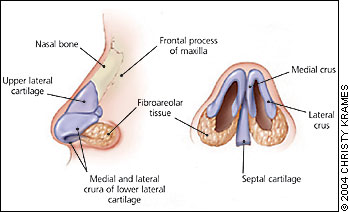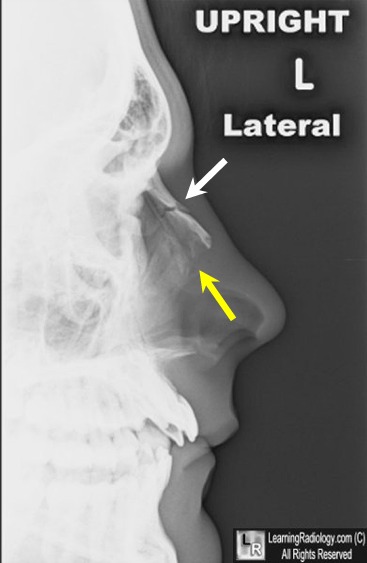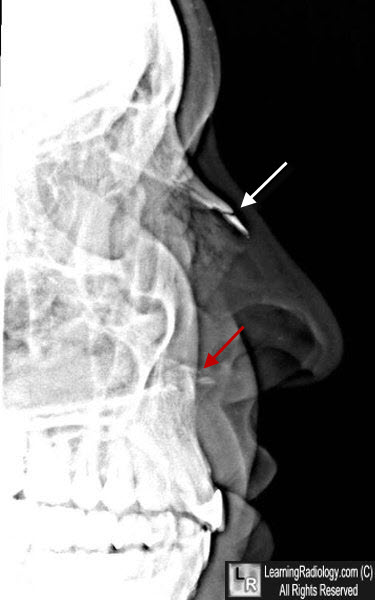|
|
Fracture of the Nasal Bone
General Considerations
- Most common facial bone fracture (40% of facial bone fractures)
- Usually from direct blow during athletics, motor vehicle collision or an altercation; sometimes fall
- Males more common
- There may be associated fractures of the anterior maxillary spine, blow-out fractures of the orbit or fractures of the nasal septum

Normal anatomy of the nasal bones
Clinical Findings
- Deformity of the nose
- Swelling
- Ecchymosis
- Epistaxis
Imaging Findings
- Nasal fractures may not be evident on plain films
- One suture line should normally be visible at the nasofrontal suture
- Otherwise, there should be no lucencies that traverse the nasal bones perpendicular to its long axis
- There may be lucencies that are normally seen that traverse the nasal bones longitudinally
- CT provides the best means of identifying facial fractures
Treatment
- Nasal packing
- Closed reduction
- Surgical reduction

Fracture of the Nasal Bone. There is a transverse fracture of the nasal bone (white arrow). The longitudinal line (yellow arrow) does not represent a fracture.

Fracture of the Nasal Bone. Enhanced lateral radiograph shows a transverse fracture of the nasal bone (white arrow). There is also an associated fracture of the anterior nasal spine (red arrow).
Management of Acute Nasal Fractures. CJ. Kucik and J Phelan. Am Fam Physician. 2004 Oct 1;70(7):1315-1320.
|
|
|